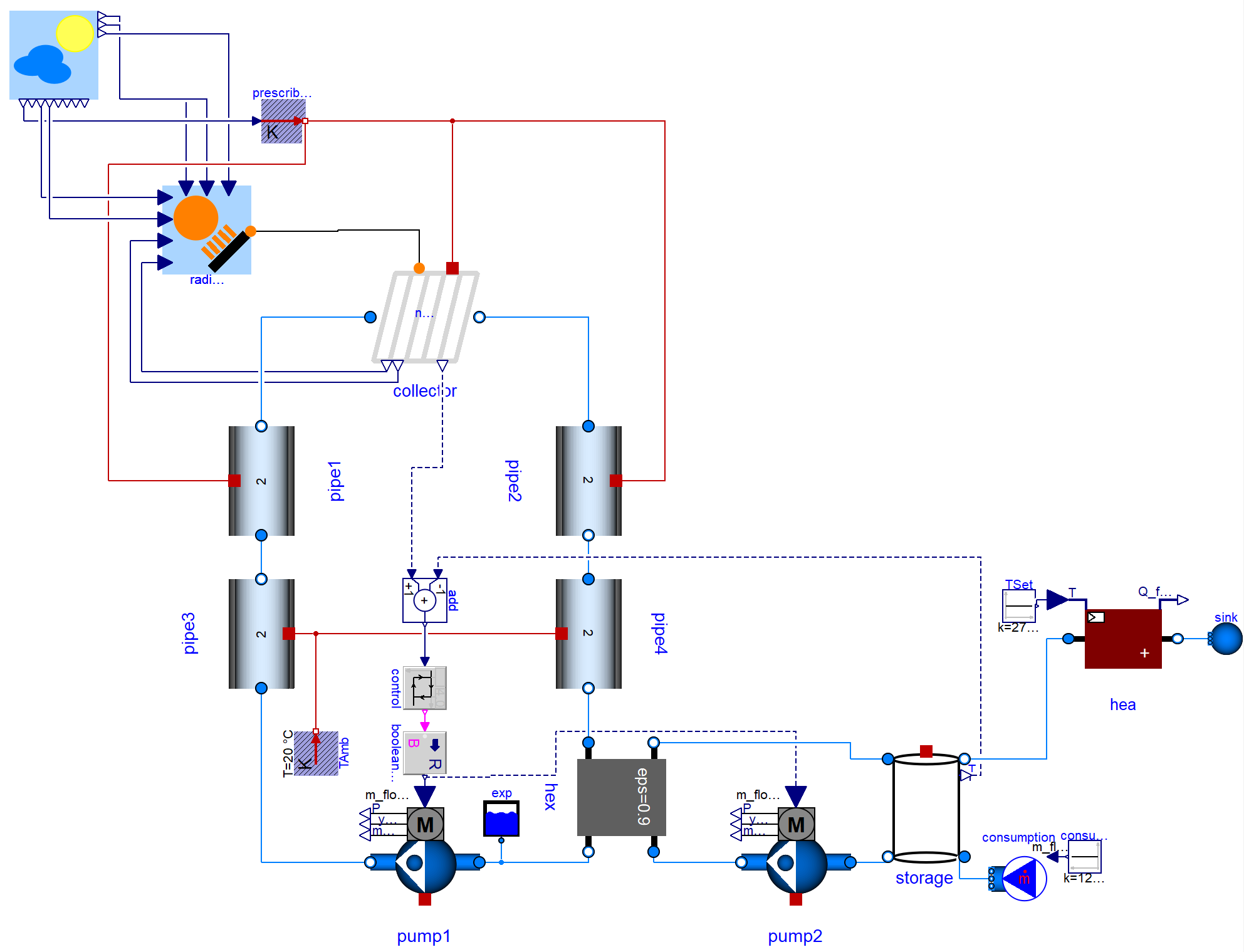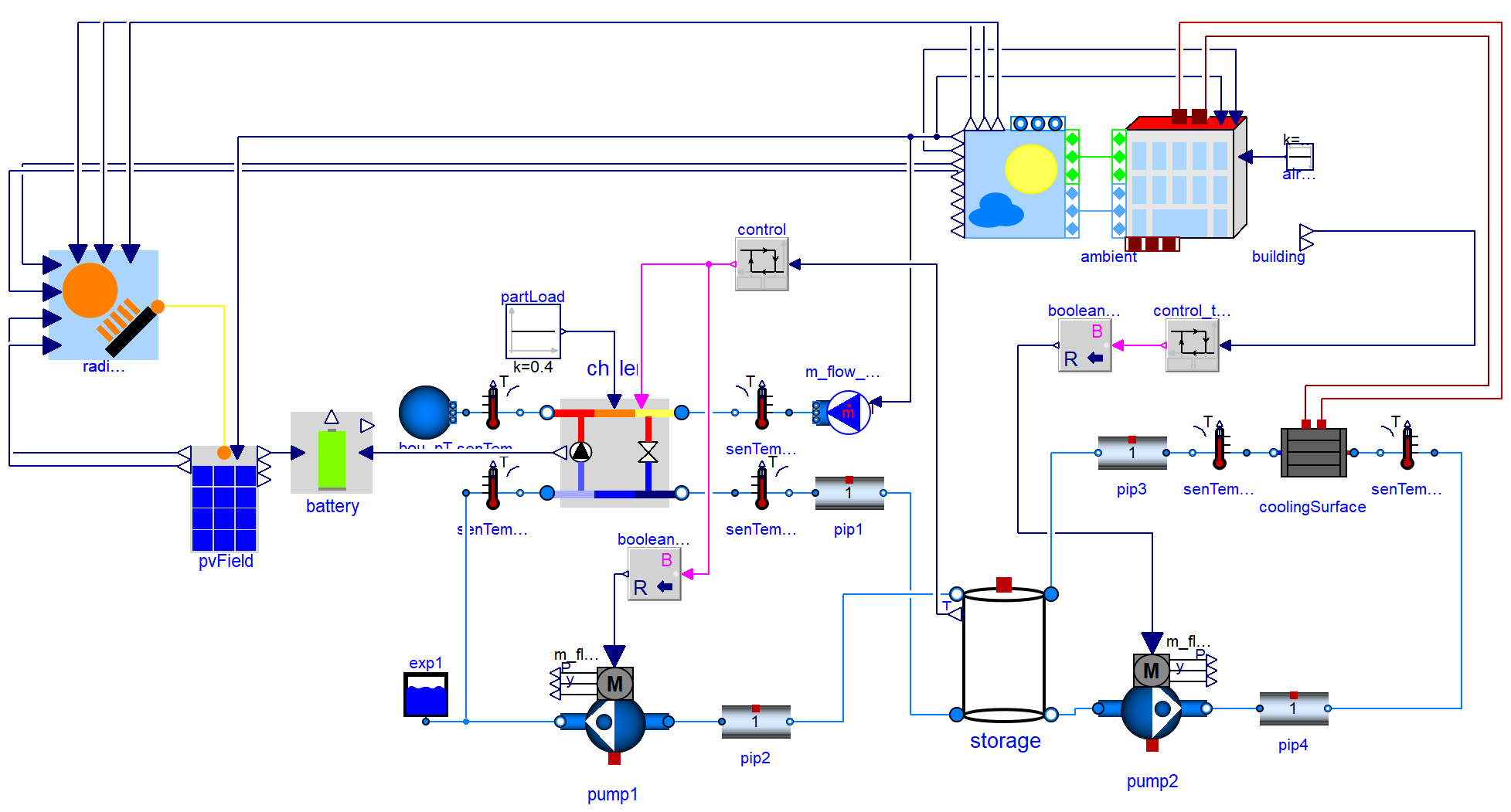Features
The BuildingSystems library has a flexible modelling architecture and can be used for a large spectrum of modelling and simulation purposes.
General features
- Supports the present Modelica language version 3.3
- Its a Open Source library (BSD 3-Clause License)
- Is being developed under Dymola
- Runs partly with the Open Source simulation tools OpenModelica and JModelica (you can see here an example)
- Uses the Modelica IBPSA Library as a core layer
- Includes databases for weather data, building materials, building constructions and energy plant components
Building simulation
- Component based and hierarchical modelling approach (models of building elements, single zones, multi-zone buildings, districts)
- Zones and building models with a different levels of detail (low-order models, 1D, 3D)
- Thermal and hygrothermal building models
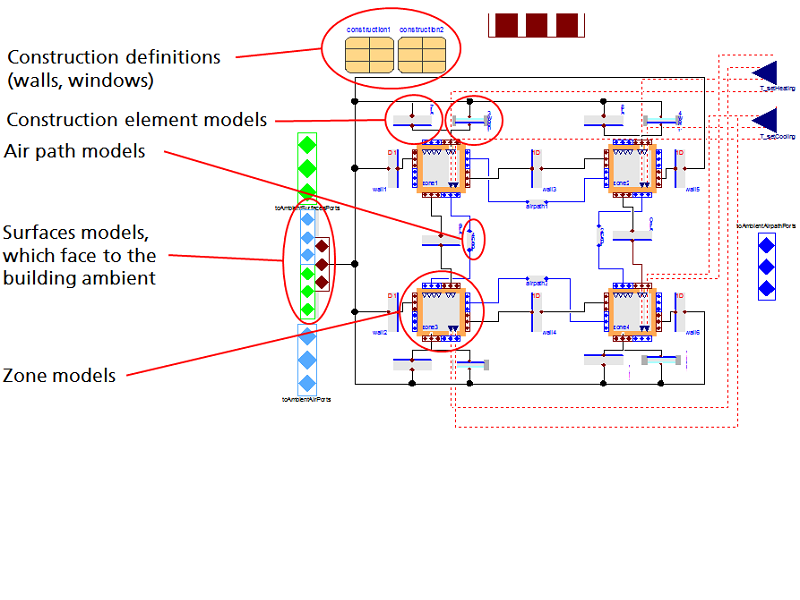
Component based modelling
Structure of a thermal building model with four thermal zones based on the 1 dimensional modelling approach of the library.
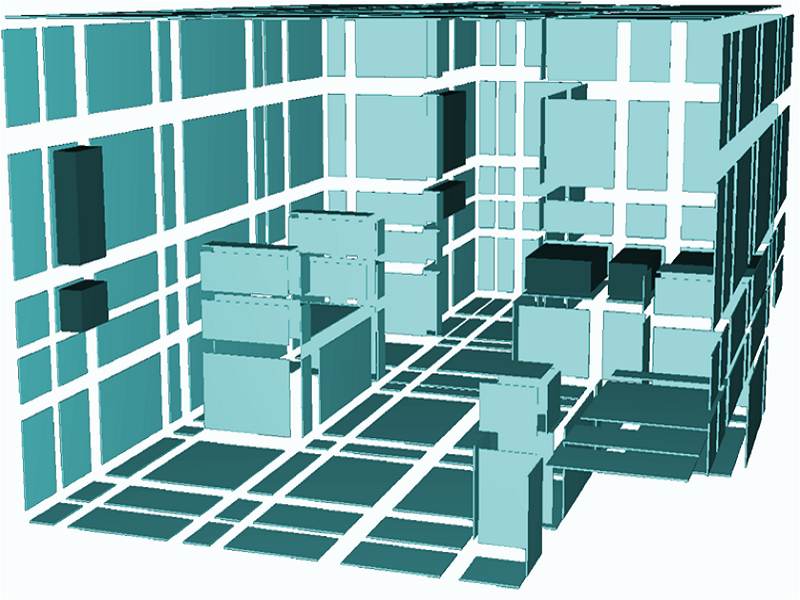
Room simulation
Thermal room simulation model which uses the 3 dimensional modelling approach of the library.
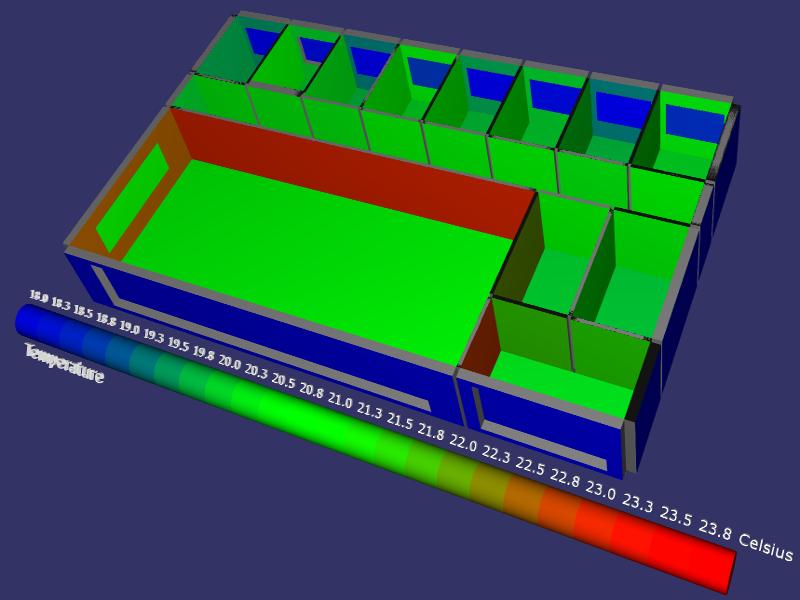
Building simulation
Thermal building simulation model of an office storey with 13 thermal zones which uses the 1 dimensional modelling approach of the library.
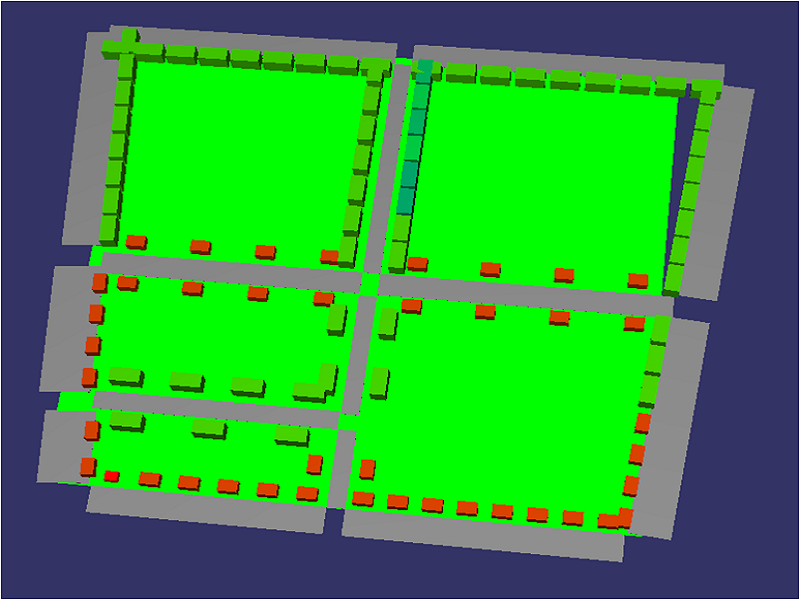
District simulation
District model which consists of a lot of low-order building models of the library.
